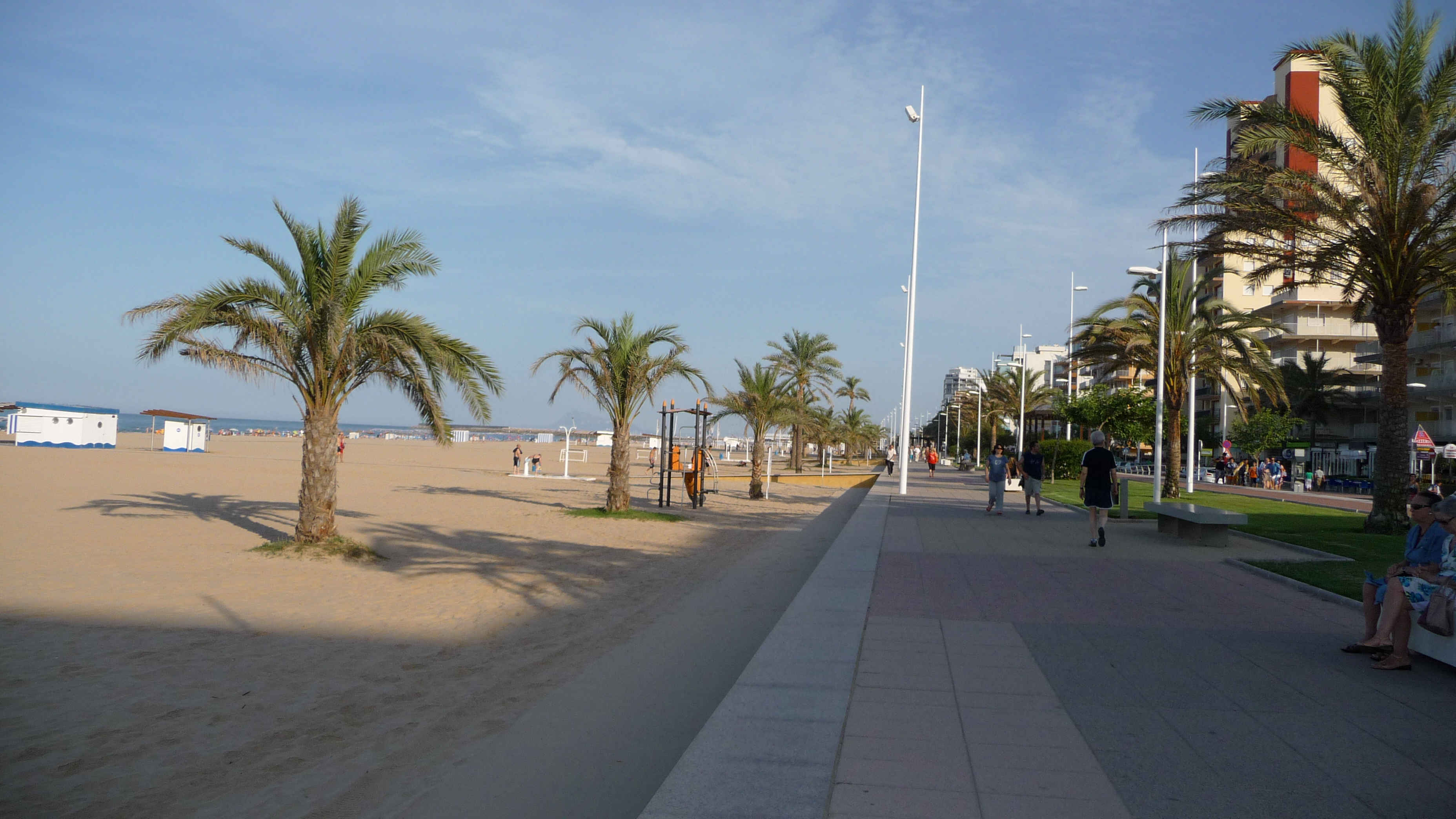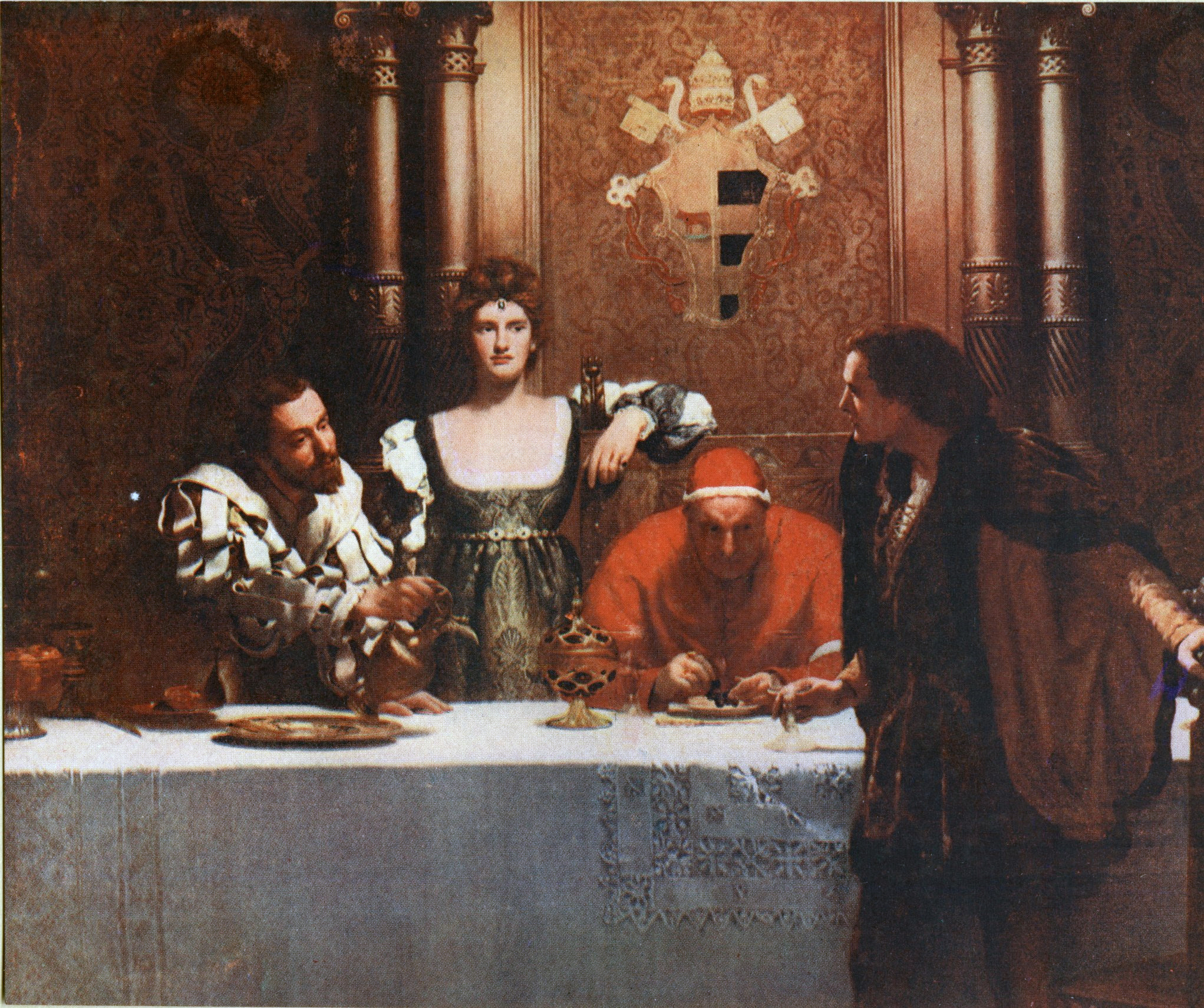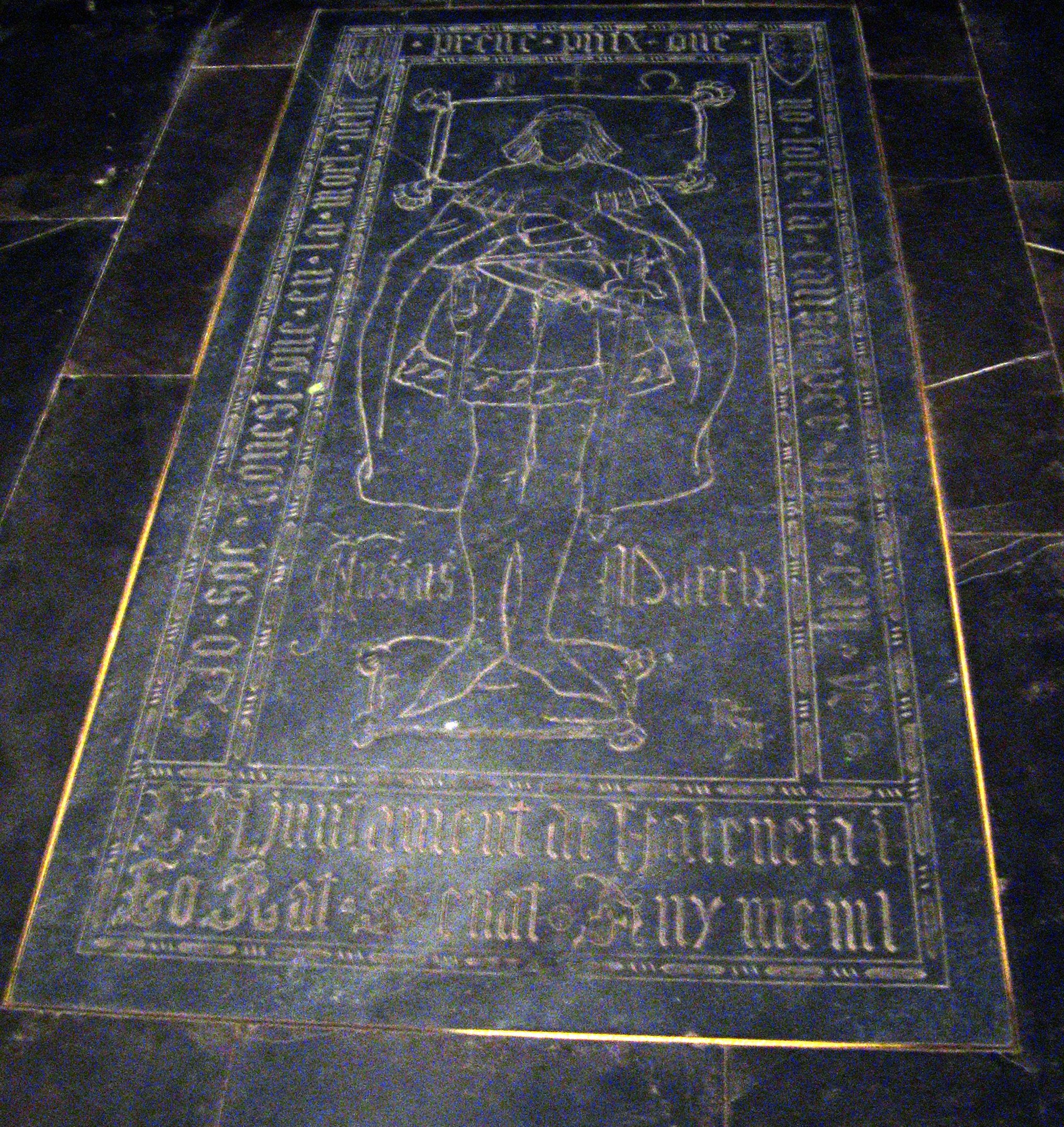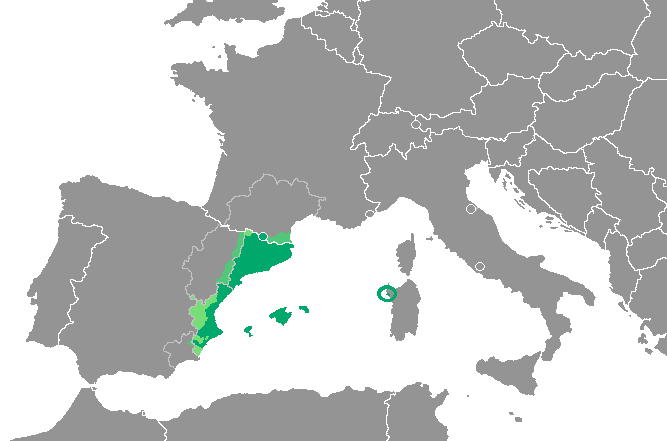|
Gandia
Gandia (, ) is a city and Municipalities of Spain, municipality in the Valencian Community, eastern Spain on the Mediterranean. Gandia is located on the Costa de Valencia, south of Valencia, Spain, Valencia and north of Alicante. Vehicles can access the city through N-322 road (Spain), road N-332 and Autopista AP-7, AP-7 highway. Gandia operated as an important cultural and commercial centre in the 15th and 16th centuries: in the 15th century it had a university. It was home to several important people, including the poet Ausiàs March (1400-1459) and the novelist Joanot Martorell (1410-1465). It is perhaps best known for the Borja or Borgia, through their family noble title, title, Duke of Gandia (originally created in 1399). Gandia is one of the largest coastal towns in Spain, with a population of over 200,000 during summer, and a centre of commerce and tourism in its region. There are two main zones, Gandia City, which has all the historical monuments, commercial activity, ... [...More Info...] [...Related Items...] OR: [Wikipedia] [Google] [Baidu] |
Borgia
The House of Borgia ( ; ; Spanish and ; ) was a Spanish noble family, which rose to prominence during the Italian Renaissance. They were from Xàtiva, Kingdom of Valencia, the surname being a toponymic from the town of Borja, then in the Crown of Aragon, in Spain. The Borgias became prominent in ecclesiastical and political affairs in the 15th and 16th centuries, producing two popes: Alfons de Borja, who ruled as Pope Callixtus III during 1455–1458, and his nephew Rodrigo Lanzol Borgia, as Pope Alexander VI, during 1492–1503. Especially during the reign of Alexander VI, they were suspected of many crimes, including adultery, incest, simony, theft, bribery, and murder (especially murder by arsenic poisoning). Because of their grasping for power, they made enemies of the Medici, the Sforza, and the Dominican friar Girolamo Savonarola, among others. They were also patrons of the arts who contributed to the development of Renaissance art. The Borgia family stands out in ... [...More Info...] [...Related Items...] OR: [Wikipedia] [Google] [Baidu] |
Valencian Community
The Valencian Community is an Autonomous communities of Spain, autonomous community of Spain. It is the fourth most populous Spanish Autonomous communities of Spain, autonomous community after Andalusia, Catalonia and the Community of Madrid with more than five million inhabitants.Instituto Nacional de Estadística, Madrid, 2020. Its eponymous capital Valencia is the third largest city and metropolitan area in Spain. It is located along the Mediterranean Sea, Mediterranean coast on the east side of the Iberian Peninsula. It borders Catalonia to the north, Aragon and Castilla–La Mancha to the west, and Region of Murcia, Murcia to the south, and the Balearic Islands are to its east. The Valencian Community is divided into three Provinces of Spain, provinces: province of Castellón, Castellón, province of Valencia, Valencia and province of Alicante, Alicante. According to Valencia's Statute of Autonomy, the Valencian people are a ''nationalities and regions of Spain, "historical ... [...More Info...] [...Related Items...] OR: [Wikipedia] [Google] [Baidu] |
Safor
Safor (; ) is a ''Comarques of the Valencian Community, comarca'' within the province of Valencia (province), Valencia, Valencian Community, Spain. The capital is the city of Gandia, but also includes the towns of Oliva, Piles, Valencia, Piles and Daimús, among others. The beach area of Gandia, La Platja, is well known for its wild nightlife during the summer. The former natural and historical comarca of Valldigna has been integrated into Safor comarca for administrative purposes. Municipalities *Ador, Valencia, Ador *Alfauir *Almiserà *Almoines *L'Alqueria de la Comtessa *Barx *Bellreguard *Beniarjó *Benifairó de la Valldigna *Beniflà *Benirredrà *Castellonet de la Conquesta *Daimús *La Font d'En Carròs *Gandia *Guardamar de la Safor *Llocnou de Sant Jeroni *Miramar, Valencia, Miramar *Oliva *Palma de Gandia *Palmera *Piles, Valencia, Piles *Potries *Rafelcofer *Real de Gandia *Ròtova *Simat de la Valldigna *Tavernes de la Valldigna *Villalonga *Xeraco *Xeresa Clima ... [...More Info...] [...Related Items...] OR: [Wikipedia] [Google] [Baidu] |
Ausiàs March
Ausiàs March (; 1400March 3, 1459) was a medieval Valencian poet and knight from Gandia, Valencia. He is considered one of the most important poets of the "Golden Century" (''Segle d'or'') of Catalan literature. Biography Not much is known of March's life. He was born in approximately 1400 to a Valencian noble family. His father, Pere March, was himself a poet and served at the court of the younger brother of King Alfonso IV, Peter. His uncle, Jaume March II, was also a poet. March was one of the two children of Pere's second wife, Lionor of Ripoll; he had a younger sister, Peirona. In 1413, the still-young March became head of his family—part of the Valencian petty nobility—upon the death of his father. From a very young age he took part in the expeditions that King Alfons el Magnànim carried out in the Mediterranean. After returning from these expeditions in 1427, he settled in Gandia. After his return, he would never again leave the region where he was born. March was ... [...More Info...] [...Related Items...] OR: [Wikipedia] [Google] [Baidu] |
Valencian Language
Valencian () or the Valencian language () is the official, historical and traditional name used in the Valencian Community to refer to the Romance language also known as Catalan language, Catalan, 'hour'. However (although regarded as non-standard), there are cases where regressive metaphony occurs over pretonic vowels; e.g. > 'affects', > 'towel'. :** Vowel harmony differs greatly from dialect to dialect, while many varieties assimilate both to the height and the quality of the preceding stressed vowel (e.g. 'Earth, land' and 'woman'); in other varieties, it is just the height that assimilates, so that and can be realised with either ( and/or ) or with ( and/or ), depending on the region and speaker. :*** In some subvarieties the unstressed vowels produced by vowel harmony may actually be higher than the stressed ones (e.g. 'door'). :* In a wider sense, vowel assimilations can occur in further instances (that is all or most instances of final unstressed , r ... [...More Info...] [...Related Items...] OR: [Wikipedia] [Google] [Baidu] |
Autopista AP-7
The ''Autopista AP-7'' (also called ''Autopista del Mediterráneo'') () is a Spanish autopista (controlled-access highway). It runs along the Mediterranean coast of Spain. AP-7 has two different sections (911+96 km): * From Els Límits (in La Jonquera municipality) to Vera: 911 km long. Main cities passed: ** Figueres ** Girona ** Sabadell ** Barcelona ** Tarragona ** Reus ** Salou ** Amposta ** Castelló de la Plana ** Sagunt ** Valencia ** Gandia ** Dénia ** Benidorm ** Alacant ** Elx ** Cartagena * From Málaga to Guadiaro: 96 km long. Main cities passed: ** Torremolinos ** Benalmádena ** Fuengirola ** Marbella ** Estepona Junctions {, class="wikitable" , - align="center" bgcolor="#19408B" style="color:white;font-size:120%;" , colspan="3" , Autopista AP-7 junctions , - !scope=col, Southbound exits !scope=col, Junction !scope=col, Northbound exits , - align="center" , style=background:white , ''Entering , and Girona Province'' , rowsp ... [...More Info...] [...Related Items...] OR: [Wikipedia] [Google] [Baidu] |
Costa De Valencia
The Costa de Valencia (; , ; literally meaning "Coast of Valencia") is coastline and tourism region of the province of Valencia in the Valencian Community, Spain. It covers the coast along the Gulf of Valencia on the Balearic Sea in western part of the Mediterranean Sea. It extends from the Camp de Morvedre in the north to Safor in the south. The Costa de Valencia has the most beaches with Blue Flag status in Spain. To its north is the Costa del Azahar (in province of Castellón) and to the south lies the Costa Blanca (in the province of Alicante). Climate Valencia region have a Mediterranean climate (Köppen: ''Csa'') bordering on a semi-arid climate (Köppen: ''BSh'') with mild winters and warm to hot, dry summers. Localities The localities along the Costa de Valencia are (from north): Sagunto area, Puçol, Alboraia, Valencia, Cullera, Gandia area, Oliva area. Beaches Beaches of Costa de Valencia, from north: * * * Playa de Canet * * Playa de Puzol * P ... [...More Info...] [...Related Items...] OR: [Wikipedia] [Google] [Baidu] |
Municipalities Of Spain
The municipality (, , , , , )In other languages of Spain: *Catalan language, Catalan/Valencian (), grammatical number, sing. . *Galician language, Galician () or (), grammatical number, sing. /. *Basque language, Basque (), grammatical number, sing. . *Asturian language, Asturian (), grammatical number, sing. . is one of the two fundamental territorial divisions in Spain, the other being the Provinces of Spain, provinces. Organisation Although provinces of Spain, provinces are groupings of municipality, municipalities, there is no implied hierarchy or primacy of one over the other. Instead the two entities are defined according to the authority or jurisdiction of each (). Some autonomous communities also group municipalities into entities known as ''comarcas of Spain, comarcas'' (districts) or ''mancomunidades'' (commonwealths). The governing body in most municipalities is called ''Ayuntamiento (Spain), ayuntamiento'' (municipal council or municipal corporation, corpora ... [...More Info...] [...Related Items...] OR: [Wikipedia] [Google] [Baidu] |
Socialist Party Of The Valencian Country
The Socialist Party of the Valencian Country (; , PSPV–PSOE) is a Social democracy, social-democratic political party in the Valencian Community, and is a regional branch of the national Spanish Socialist Workers' Party (PSOE). The PSPV was originally a small Valencian nationalism, nationalist and leftist Valencian party, mostly confined to the academic world within the University of Valencia. In 1978, they decided to merge with the much larger national PSOE, to which they integrated. Their name remains in the name of the Valencian branch of the PSOE, officially called PSPV-PSOE, even though it is usually reduced to PSOE only by the party itself. This Valencian branch of the PSOE, unlike their Partit dels Socialistes de Catalunya, Catalan counterpart, does not have a record of having acted independently from the national executive of the Spanish-wide PSOE. History The PSPV-PSOE was the ruling party in the Valencian Community, Valencian Country from 1983 through 1995. The People's ... [...More Info...] [...Related Items...] OR: [Wikipedia] [Google] [Baidu] |
Noble Title
Traditional rank amongst European imperiality, royalty, peers, and nobility is rooted in Late Antiquity and the Middle Ages. Although they vary over time and among geographic regions (for example, one region's prince might be equal to another's grand duke), the following is a reasonably comprehensive list that provides information on both general ranks and specific differences. Distinction should be made between reigning (or formerly reigning) families and the nobility – the latter being a social class subject to and created by the former. Sovereign * The word ''monarch'' is derived from the Greek , ''monárkhēs'', "sole ruler" (from , ''mónos'', "single" or "sole", and , ''árkhōn'', "archon", "leader", "ruler", "chief", the word being the present participle of the verb , ''árkhein'', "to rule", "to lead", this from the noun , ''arkhē'', "beginning", "authority", "principle") through the Latinized form . * The word ''sovereign'' is derived from the Latin ("above" ... [...More Info...] [...Related Items...] OR: [Wikipedia] [Google] [Baidu] |
Joanot Martorell
Joanot Martorell (; c. 1410 – 1465) was a Valencian knight and writer, best known for authoring the novel '' Tirant lo Blanch'', written in Catalan/Valencian and published at Valencia in 1490. This novel is often regarded as one of the peaks of the literature in Catalan language and it played a major role in influencing later writers such as Miguel de Cervantes, who, in the book burning scene of Don Quixote, says "I swear to you, my friend, this (Tirant lo Blanch) is the best book of its kind in the world". The novel deals with the adventures of a knight in the Byzantine Empire; it is considered one of the first works of alternate history. Martorell apparently was a chivalrous man and suffered an early death due to court intrigue, leaving the novel unfinished. It was prepared for publication by his friend and colleague, Martí Joan de Galba. Biography Martorell was born in Valencia around the year 1410. According to the historian Jaume Chiner, Martorell's family was orig ... [...More Info...] [...Related Items...] OR: [Wikipedia] [Google] [Baidu] |
N-322 Road (Spain)
The N-322 is a highway in south east Spain. The road starts at the Autovía A-32, 3 km east of its junction with the Autovía A-4 at Linares. The road heads east past the ''Etang de Giribaile'' and north of the town of Úbeda. The road then turns north east along the eastern flank of the Sierra de Cazorla and past the waterfalls of ''Garganta'' on the River Guadalquivir past the ''Etang de Guadalmena'' after which it leaves Andalucia. The road follows the Rio Guadalmeria through the Sierra de Alcaraz before heading north east to Albacete where the road has been upgraded to the A-32 as a by-pass. The road crosses the Autovía A-31. The N-322 heads north across the valley of the Jũcar and then at Mahora the road turns north east. The road is now at 700 m elevation. The road then passes into the Province of Valencia passing over the Riu Cabriol and through heavily wooded countryside to Requena. Here the road meets the Autovía A-3 The Autovía A-3 (also called ' ... [...More Info...] [...Related Items...] OR: [Wikipedia] [Google] [Baidu] |






